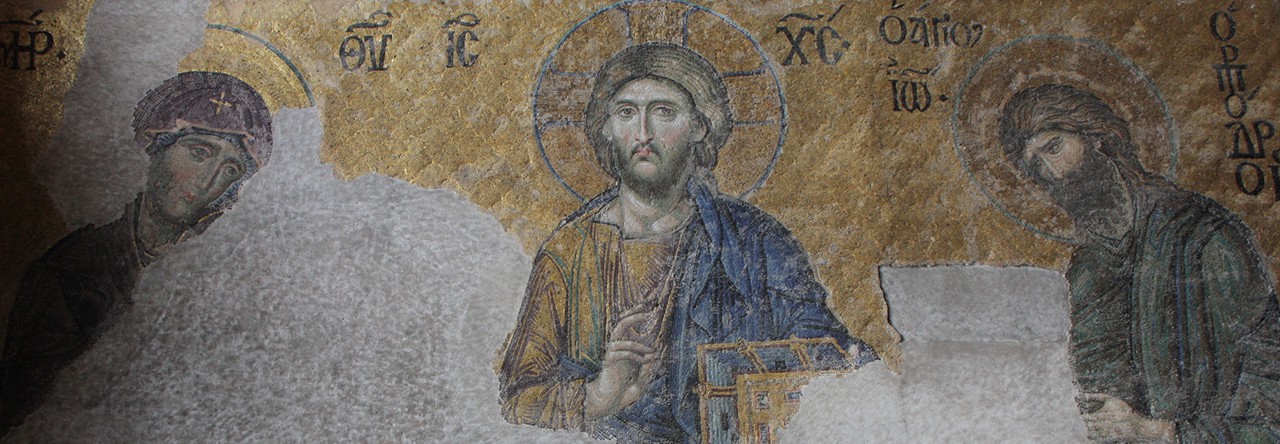This is the 7Th blog in this series which began with Reading the Bible: Hermeneutics & Typology. The previous blog is Methodology: How we read the Bible – Theodore of Mopsuestia.
St. John Cassian died in 435 AD and so was a contemporary of Theodore of Mopsuestia who was discussed in the previous blog. In the selection below from Cassian’s writings, we get a clear sense of his own methodology in approaching the Scriptures to study and interpret them.
“Now there are three kinds of spiritual lore, namely, tropology, allegory and anagoge. This is what Proverbs has to say about them: ‘Write these three times over the spread of your heart’ (Prv 22:20).
History embraces the knowledge of things which are past and which are perceptible. The apostle gives an example: ‘It is written that Abraham had two sons, one by a servant and one by a free woman. The offspring of the slave was born in accordance with the flesh; the child of the free woman was born as a result of a promise’ (Gal 4:22-23).
What follows is allegorical, because the things which actually happened are said to have prefigured another mystery. ‘These two women stand for the two covenants. The first who comes from Mount Sinai and whose children are born to slavery, is Hagar. For Sinai is a mountain in Arabia , and so she corresponds to the present-day Jerusalem and is a slave along with her children.
Anagoge climbs up from spiritual mysteries to the higher and more august secrets of heaven…
Tropology is moral teaching designed for the amendment of life and for instruction in asceticism. It is as if by these two covenants we were to mean the practical discipline and the contemplative, or else we could take Jerusalem or Sion to be the human soul…
Revelation is linked to allegory insofar as it explains in a spiritual sense the truths hidden under the historical account. For example, suppose we wished to discover how ‘our fathers were all beneath the cloud and all were baptized in Moses in the cloud and in the sea and [how] all ate the same spiritual food and drank the same spiritual drink from the rock and that rock was Christ’ (1 Cor 10:1-4). This way of stating the matter prefigures allegorically the body and blood of Christ which we receive every day.
The telling of things similarly referred to by the apostle is tropology. With this we prudently discern the value and the worth of everything in the domain of practical judgment. An example of this is when we are instructed to consider whether ‘it is fitting that a woman should pray to God with an uncovered head’ (1 Cor 11-13). As has been said, this way of thinking has a moral content.
Then there is prophecy, which the apostle puts in third place. He means anagoge, by means of which words are moved to the plane of the invisible and the future: ‘Brothers, we do not wish you to be in ignorance with regard to the dead, so that you will not grieve like those others who have no hope…
Doctrine makes plain the straightforward sequence of historical explanation. In it there is no more hidden meaning than what is in the words themselves, for example, the following: ‘In the first place I handed on to you what I had been taught myself, namely, that Christ died for our sins in accordance with the Scriptures, that He was buried and that He rose on the third day and th)at He was seen by Cephas’ (1 Cor 15:3-5)…” (St. John Cassian, CONFERENCES, pp 160-161)
St. John Cassian offers examples for the different lessons and meanings he believes we are to seek from the Scriptures. All of these levels and meanings are ones that are placed in the text of the Bible by God Himself. Our task remains the careful reading and study of Scriptures to see what God has placed in the text. When we read the Scriptures for all of the meanings God intended for us to receive, then those scriptures are revealed as inspired and capable of teaching us, exhorting us, training us in righteousness and equipping us for every good work (2 Timothy 3:16).
Next: Methodology: How We Read the Bible – Theodoret of Cyrrus

Pingback: Methodology: How We Read the Bible – Theodore of Mopseustia | Fr. Ted's Blog
Pingback: Methodology: How We Read the Bible – Theodoret of Cyrrus | Fr. Ted's Blog